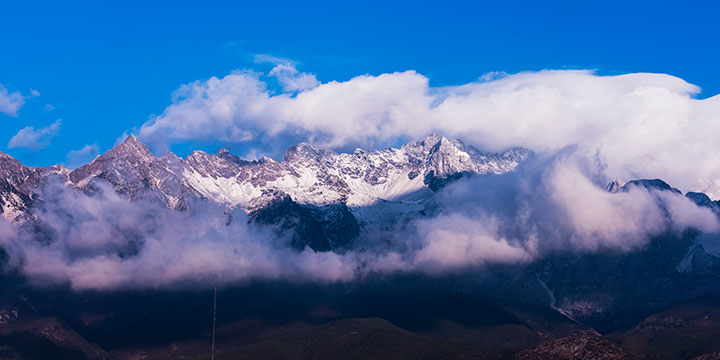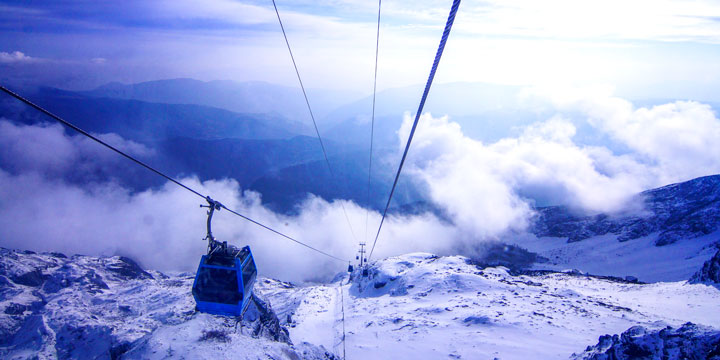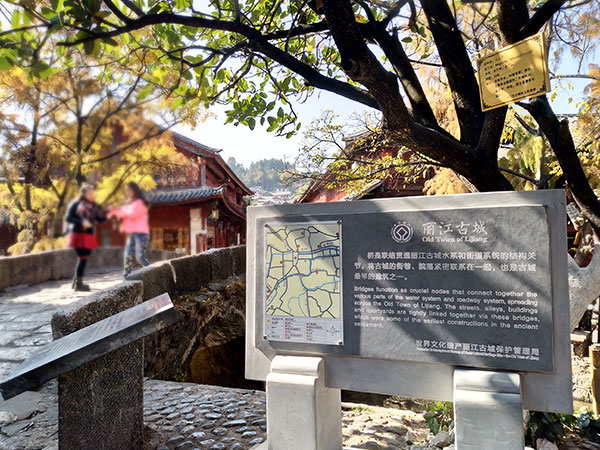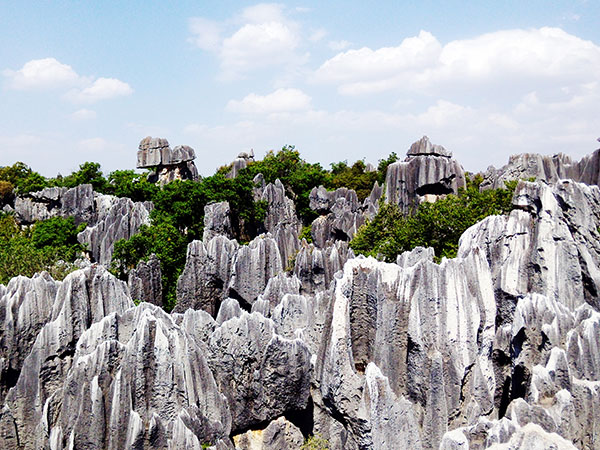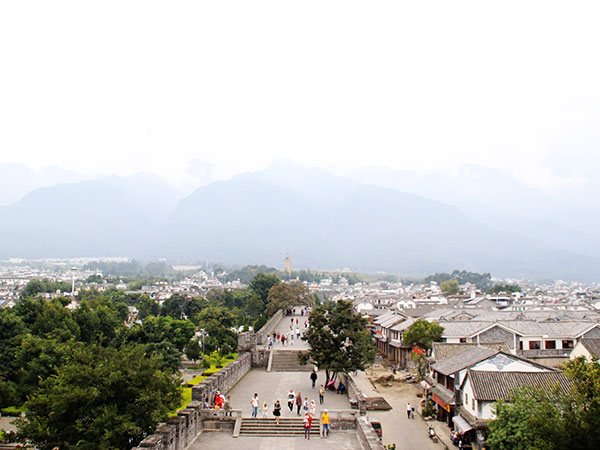Yunnan is known as one of the birthplaces of human beings, and the remains of the Yuanmu Man found in the province date back 1.7 million years. Furthermore, countless places of historic interest are scattered around the province. Yunnan is inhabited by such 26 ethnic groups as the Han, Dai, Bai, Yi, and Hani, making it the province with the most nationalities in China. Each ethnic minority has its unique, colorful customs. A famous tourist province in China, Yunnan has now two World Heritage sites, namely the Lijiang Ancient Town and the Three Parallel Rivers.
Yunnan has a generally mild climate with pleasant and fair weather because of the province's location on south-facing mountain slopes, receiving the influence of both the Pacific and Indian oceans, and although the growing period is long, there is little arable land. See Agriculture in Yunnan. January average temperatures range from 8°C to 17°C; July averages vary from 21°C to 27°C. Average annual rainfall ranges from 600 mm to 2,300 mm, with over half the rain occurring between June and August. The plateau region has moderate temperatures. The western canyon region is hot and humid at the valley bottoms, but there are freezing winds at the mountaintops.
The sunshine in Yunnan is too strong during the day that you’d better take your sunscreen and sunglasses. Also you should drink more water, eat more fruit, and prevent dehydration.
Go to Yunnan in March, travelers need to wear cotton jersey and a thicker coat, cotton trousers and over-trousers.In winter and spring, Kunming has large daily temperature difference, so travelers need to take coats and sweaters.
August in Yunnan is generally rainy season, you’d better wear thin coat. If you want to go to
Jade Dragon Snow Mountain in Lijiang, you should take thicker cotton-padded clothes. Lijiang has a large temperature difference between morning and evening, it is generally to put on your thick coat or down jacket in the morning and evening.
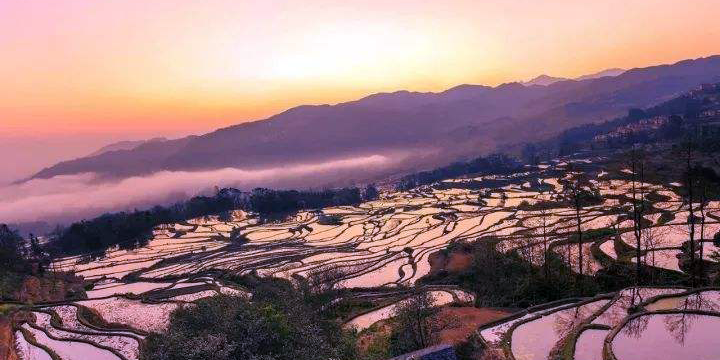
(Yuanyang Rice Terrace, Yuanyang, Yunnan)
Tourism
Located in the southwest frontier of China, Yunnan, is well known as the "Colorful Yunnan" "South of the Clouds ". It has a good climate, superior geographical environment, unique national conditions and customs, rich local color of the historical and cultural resources. Due to its advantaged resources, Yunnan tourism has developed quickly. Its advantages mainly manifests that the ecology of tourist resources; rich nationality; the diversity of resources; characteristic landscapes; balance of landscapes; mild climate landscapes.
► Best Places to Visit in Yunnan
♦ Kunming, the capital of Yunnan Province, is the political, economic and cultural center and also the transport and communication hub of the province. With a history more than 2,400 years, it owns its importance to the fact that is was the gateway to the well-known South Silk Road that facilitated trade with Tibet, Sichuan, Myanmar and India.
♦ Dali is a city of ancient felling. Many of the architectures of the city were built of marble from the ore nearby, and that is why it is also called a city of Dali Stone (marble). Marble buildings, marble streets, marble wall foundations and marble wells make the city so bright and limpid as if it is a tranquil fairyland.
♦ Lijiang includes the heritage site of Lijiang Ancient Town as well as picturesque nearby surroundings. In 1998, Lijiang Ancient Town was inscribed into the World Heritage List by the World Heritage Commission of the UNESCO. The Commission called it an exceptional ancient town set in a dramatic landscape which represents the harmonious fusion of different cultural traditions to produce an urban landscape of outstanding quality.
♦ Shangri-La was a fictitious paradise, characterized by towering snow-capped mountains, lush forests, vast gorges and idyllic lakes. The beautiful scenery described by Hilton made the name stick in popular memory and arouses a certain curiosity and mystery whenever it is heard.
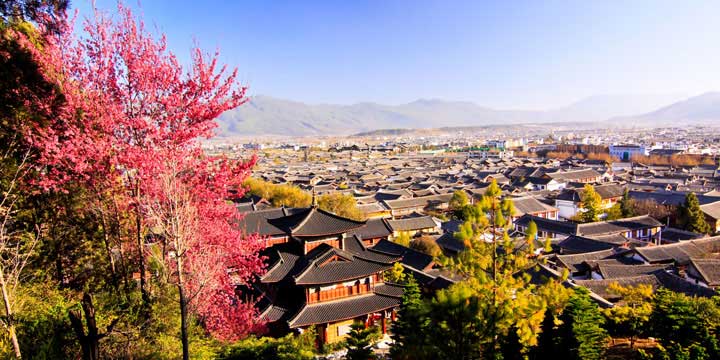
(Shuhe ancient town, Lijiang, Yunnan)
► Activities
♦ Kunming: Kunming 99 Horticultural Expo Garden parades, Yunnan ethnic village song and dance performance, Yunnan ethnic village torch festival activities (only be held during the torch festival), and dance “the Impression of Yunnan” directed by the famous dancer Yang Liping 《印象云南》, Jixin Feast dance (吉鑫宴舞).
♦ Dali: “The Courses of Bai Nationality” song and dance performances (“白族三道茶”歌舞表演), Butterfly Dream《蝴蝶之梦》large-scale song and dance performances, Imaging Dali《希夷之大理》large subject-live performance.
♦ Lijiang: Mountains Rivers Show (丽水金沙) large-scale song and dance performances, ancient Naxi Dongba music concert, Impression Lijiang 《印象丽江》 by Zhang yimou, Lugu Lake song and dance performance Mosuo Bonfire Party《摩梭情篝火晚会》, Lijiang Eternal Love (丽江千古情);
♦ Xishuangbanna: Xishuangbanna Dai Minority Park (西双版纳傣族园) Dai dance and water-sprinkling festival activities, super song and dance show Mengbala Naxi Dance (超级歌舞秀 · 勐巴拉娜西), Manting Park (曼听公园) Lancang River · Night of the Mekong River 《澜沧江·湄公河之夜》, 3D technology scene shows "Shaoduoli Exotic Feelings Nights" 《哨哆丽风情之夜》, Mannong (曼弄) Fengxin district Duoge Watery Wine 《多哥水酒》 large-scale song and dance performances, Wangtianshu scenic spot the Feast of Rainforest 《雨林盛宴》 large landscape scene performance.
♦ Shangri-la: song and dance
Dreamy Shangri-la《梦幻香格里拉》,
the Tibetan Home Visits《藏民家访》.
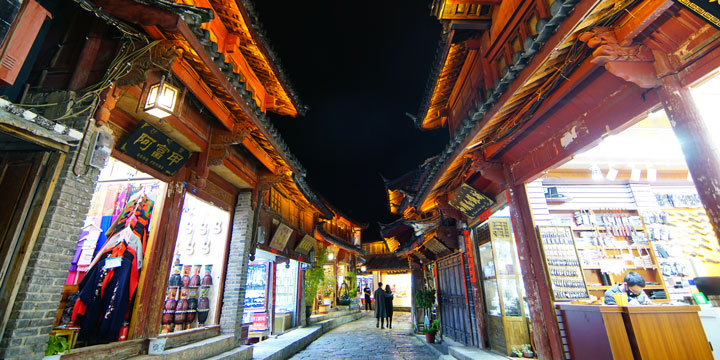
(Shuhe ancient town, Lijiang, Yunnan)
Transport
► Air
By the end of 2012, there are 12 Yunnan operating civil transport airports, one regional hub airport (Kunming Changshui international airport) and 11 feeder airports (Zhaotong, Lijiang, Xishuangbanna, Tengchong, Dali, Baoshan, Mangshi, Shangri-la, Pu-erh, Linncang, Wenshan), the airport density up to 0.3 per sq km. Yunnan air routes 319, 275 domestic routes, 38 international routes and 6 regional routes in 118 navigable cities. Among them, 89 domestic cities, 26 international cities, 3 regional cities. In Yunnan aviation market of domestic and foreign airlines, there are 37 international airlines and 15 regional airlines, 4 bases airlines. Yunnan civil aviation transport landing sorties are 276500, passenger throughput of 31.9211 million passengers, total cargo throughput of 282600 tons.
► Train
More than 100 years ago, the first railway of Yunnan was built, Yunnan-Vietnam railway, and it was the China's first international railway. Due to the complexity of Yunnan terrain, geological conditions are adverse, since the founding of the new China, Yunnan railway development is slow. Up to 2010, the Yunnan province railway mileages are about 2229 km, accounts for only 4% of the national railway mileage.
► Bus
By the end of 2012, the total highway mileages are 219400 kilometers in Yunnan province. Among them, the expressway mileage of 2943 kilometers, secondary highway mileage of 10136 kilometers, the rural road mileage of 181400 kilometers; 94% of the villages and towns in Yunnan unobstructed, 98% of administrative villages can be accessed, 36% of administrative villages unobstructed.
"Seven ways out of the province" are from Kunming to Panzhihua (Sichuan passageway), from Kunming to Fushui (Sichuan and Chongqing passageway), from Kunming to Xuanwei Puli (Guizhou passageway), from Kunming to Fuyuan scenic spot (Guizhou passageway), from Kunming to Luoping (Guizhou, Guangzi passageway), from Kunming to Luocunkou (Guangxi, Guangdong passageway), from Kunming to Deqin border river (Tibet passageway).
"Four exits" namely: China-Vetnam (Kunming to Hanoi), China-Laos-Thailand (Kunming to Bangkok), China-Myanmar (Kunming to Ruili to Kyaukpyu) and through Myanmar to South Asia (Kunming through Myitkyina to Leiduo) highway tunnel.
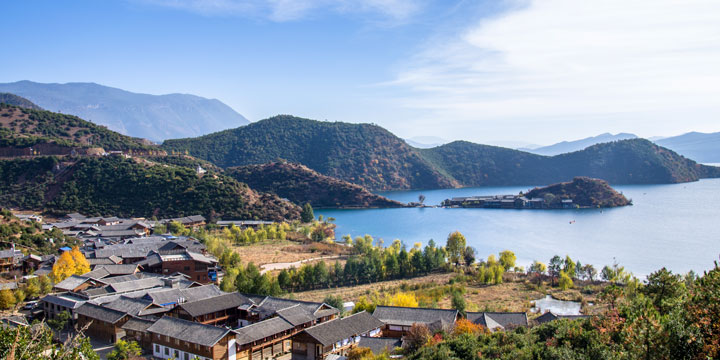
(Lugu Lake, Lijiang, Yunan)
► Metro
The capital city of Yunnan——
Kunming, now has four metro lines in operation, which are
line 1,2,3 and 6.
Metro line 1 was the first line that Kunming had. It started to build in 2008 and opened to public operation in May 20th, 2013. It runs from the south upwards to the downtown area connecting Kunming South Railway Station and Kunming Railway Station.
Metro line 2 started to build in 2008 and opened to public operation in Apr 28th, 2014. It runs from the north downwards to the downtown area, starting from the North Bus Center Station going through the North Railway Station and meeting Metro Line 1 at the Inner Exchange Huancheng Nanlu Station(环城南路) .
Metro line 3 opened to public operation in August 29th 2017. It runs from east to west, starting from the East Bus Center Station in the East and ends in Xishan park in the west crossing Metro line 2 at Inner Exchange Station (东风广场) Dongfeng Square.
Metro line 6 runs from northeast to southwest starting at Kunming Changshui International airport from northeast and meets Metro line 3 at East Bus Center. Tourists arrive at Kunming airport may use Metro line 6 changing to Metro line 3 to get to downtown area of Kunming.
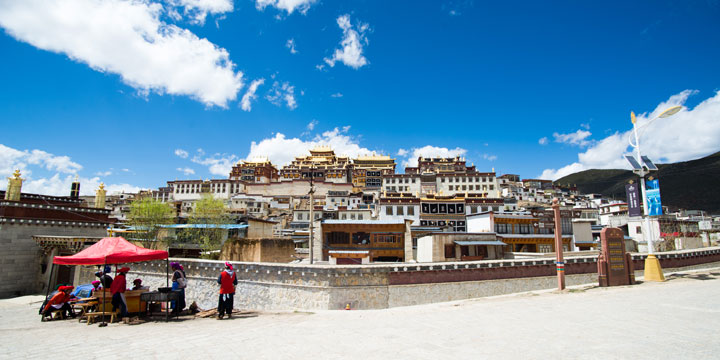
(Shangri-la, Yunnan)
Festival
♦ Huashan Festival (Miao minority), is in the third day in lunar calendar, at the edge of Mengzi, men and women will sing in antiphonal, and dance Lusheng dance, and climb flower pole.
♦ March Fair (Bai minority), is one of Dali’s biggest events, which dates back to the eighth century. It is in the March 15 to 21 in lunar calendar, which is a material and cultural exchange such as local products.
♦ Munao Zongge (Jingpo minority), is in the day of the first lunar month 15th to 16th in Longchuan Mangshi city. Munao Zongge is the Jingpo language transliteration, meaning musical event or everyone dancing together. Munao Zongge is a traditional festival used to drive the evil and to reward good luck with love and celebrate the harvest, is also the most solemn festival of Jingpo people.
Raosanling (Bai minority), is in the lunar April 13 to 15 in Dali, which is a festival of religious sacrificial activities, outing, and singing.
 Ask a Question
Ask a Question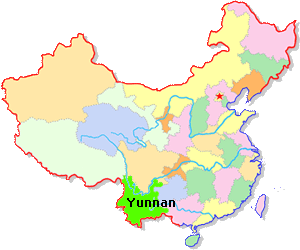 As an important border province of southwestern in China, Yunnan borders Burma, Vietnam, and Laos. It has long been reputed as 'Colored Clouds in the South.' It has an average altitude of 2,000 meters and a temperate tropical plateau monsoon climate. It boasts imposing natural scenery, such as snowcapped mountains, glaciers, lakes, hot springs, plateaus, virgin forests, and tropical rainforests. In addition, it abounds in biological resources and enjoys such good reputations as the Kingdoms of Plants and the Realm of Animals, which has greatly benefited in the development of ecological tourism.
As an important border province of southwestern in China, Yunnan borders Burma, Vietnam, and Laos. It has long been reputed as 'Colored Clouds in the South.' It has an average altitude of 2,000 meters and a temperate tropical plateau monsoon climate. It boasts imposing natural scenery, such as snowcapped mountains, glaciers, lakes, hot springs, plateaus, virgin forests, and tropical rainforests. In addition, it abounds in biological resources and enjoys such good reputations as the Kingdoms of Plants and the Realm of Animals, which has greatly benefited in the development of ecological tourism.